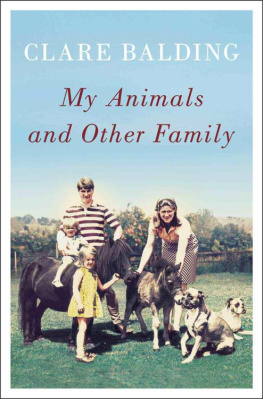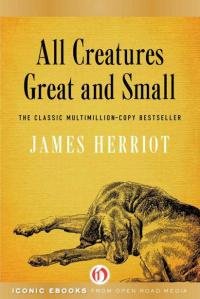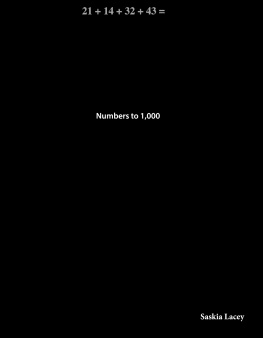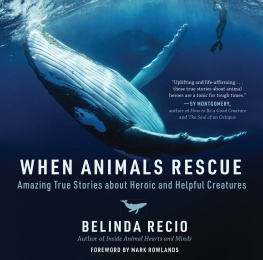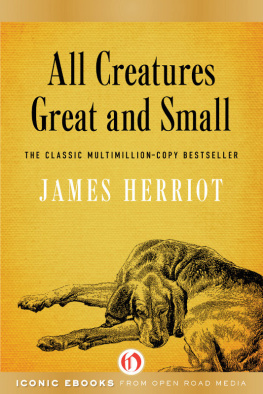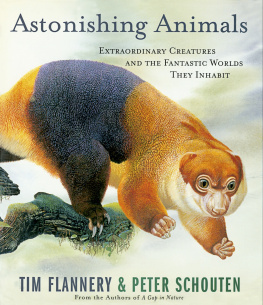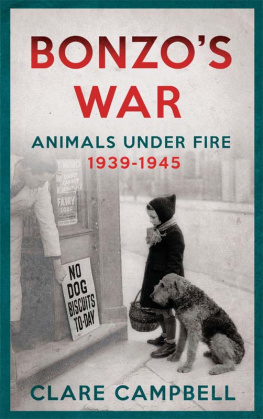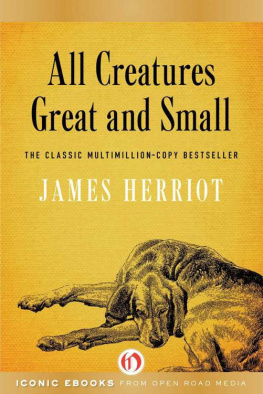Clare Balding - Heroic Animals: 100 Amazing Creatures Great and Small
Here you can read online Clare Balding - Heroic Animals: 100 Amazing Creatures Great and Small full text of the book (entire story) in english for free. Download pdf and epub, get meaning, cover and reviews about this ebook. year: 2020, publisher: Hachette UK, genre: Detective and thriller. Description of the work, (preface) as well as reviews are available. Best literature library LitArk.com created for fans of good reading and offers a wide selection of genres:
Romance novel
Science fiction
Adventure
Detective
Science
History
Home and family
Prose
Art
Politics
Computer
Non-fiction
Religion
Business
Children
Humor
Choose a favorite category and find really read worthwhile books. Enjoy immersion in the world of imagination, feel the emotions of the characters or learn something new for yourself, make an fascinating discovery.

- Book:Heroic Animals: 100 Amazing Creatures Great and Small
- Author:
- Publisher:Hachette UK
- Genre:
- Year:2020
- Rating:3 / 5
- Favourites:Add to favourites
- Your mark:
- 60
- 1
- 2
- 3
- 4
- 5
Heroic Animals: 100 Amazing Creatures Great and Small: summary, description and annotation
We offer to read an annotation, description, summary or preface (depends on what the author of the book "Heroic Animals: 100 Amazing Creatures Great and Small" wrote himself). If you haven't found the necessary information about the book — write in the comments, we will try to find it.
Heroic Animals: 100 Amazing Creatures Great and Small — read online for free the complete book (whole text) full work
Below is the text of the book, divided by pages. System saving the place of the last page read, allows you to conveniently read the book "Heroic Animals: 100 Amazing Creatures Great and Small" online for free, without having to search again every time where you left off. Put a bookmark, and you can go to the page where you finished reading at any time.
Font size:
Interval:
Bookmark:
Clare Balding OBE is an award-winning broadcaster and writer. Her memoir My Animals and Other Family was named Biography of the Year at the National Book Awards and was a number 1 bestseller. She followed it with the highly acclaimed Walking Home: My Family and Other Rambles . She has also written three bestselling novels for children and The Girl Who Thought She Was a Dog for World Book Day. Clare has presented sport and factual documentaries on TV and radio for over twenty-five years, working on six Olympic Games as well as every Paralympics since 2000. She has presented Ramblings on BBC Radio 4 for twenty years. Clare is a strong advocate for the increased promotion of womens sport. She lives in London with her wife Alice and their two cats.
My Animals and Other Family
Walking Home
FOR CHILDREN
The Racehorse Who Wouldnt Gallop
The Racehorse Who Disappeared
The Girl Who Thought She Was a Dog
The Racehorse Who Learned to Dance
100 Amazing Creatures Great and Small


www.johnmurraypress.co.uk
First published in Great Britain in 2020 by John Murray (Publishers)
An Hachette UK company
Copyright Clare Balding 2020
The right of Clare Balding to be identified as the Author of the Work has been asserted by her in accordance with the Copyright, Designs and Patents Act 1988.
Cover image: a messenger dog showing the tin cylinder in which the message was carried, Etaples, 1918. Photograph Imperial War Museum/Q9277.
All rights reserved.
No part of this publication may be reproduced, stored in a retrieval system, or transmitted, in any form or by any means without the prior written permission of the publisher, nor be otherwise circulated in any form of binding or cover other than that in which it is published and without a similar condition being imposed on the subsequent purchaser.
A CIP catalogue record for this title is available from the British Library
eBook ISBN 978 1 529 34385 4
John Murray (Publishers)
Carmelite House
50 Victoria Embankment
London EC4Y 0DZ
www.johnmurraypress.co.uk
For the everyday heroics of the animals who have been there when we needed them most
In memory of Archie (200520)

You can double tap images to increase their size. To return to the original view, just tap the cross in the top left-hand corner of the screen
I have always believed that I have been shaped more by the animals in my life than the people. Through countless acts of love and kindness, or in offering encouragement as I endeavoured to find a way to communicate with them, animals have made me who I am. Whether it was Candy the Boxer, who was my early protector and nanny, Valkyrie the Shetland pony who did her best to teach me manners, Volcano the Welsh Mountain pony who taught me patience, Frank the Heinz 57 pony who was my first real love or Henry the runaway who taught me how to be brave, I owe everything to animals.
I was not quite born in a stable and schooled in a kennel but near enough. I grew up surrounded by dogs, ponies and horses. They were way above me (and my brother) in the pecking order of family importance and I was perfectly happy to accept that. Every family photo has at least one animal at the centre of it and if there was spare cash it was far more likely to go on a new horse rug, headcollar or dog bed than any human luxury.
This was my norm and I didnt realise until I went to school that not everyone lived like this. To be fair, literature played its part in asserting the dominance of animals certainly the books I read, such as The Jungle Book , Black Beauty , Doctor Dolittle and Winnie-the-Pooh but in real life, when I found that some people actually existed without regular animal contact, I was shocked.
I was so obsessed with animals that I went through a stage of thinking I was a dog. I often tell schoolchildren that dogs have got it sussed when it comes to the priorities in life: food, exercise, sleep and love. Thats all that matters. I always think that if we humans stuck to these four essentials, we might have more chance of finding the key to eternal happiness. In the end, as dogs will tell you, everything else is gravy.

Me as a baby and Candy the Boxer.
Animals bring out the best of us as human beings and I think they define our humanity as well as our development as a civilised race. We have moved from being a type of animal to being dependent upon them, from using them as food or transport to treating them as part of our lives and our households. They reflect the best and the worst of us. If we are kind and consistent, patient and clear, they will respond by helping us as best they can. If we are cruel and impatient, they have every right to bite or kick us.
In the UK, around twelve million households have pets. Thats millions of dogs, cats and rabbits as well as gerbils, hamsters and guinea pigs. Add in over 800,000 horses and ponies and you have a nation packed to the brim with animal-lovers.
Our relationship with animals as part of our lives and our households goes back much further than you might think and it seems to me that valuing the contribution of animals is a mark of an advanced society. Whether its the ancient Mesopotamians, Egyptians, Native Americans, Greeks, Romans, Mayans or Incas, all the major civilisations of the world needed animals to progress and learnt to domesticate them. In China, the zodiac is made up of twelve animals and every year is guided by one of them. Your year of birth is linked to an animal, which is meant to exert influence over your character. I was born in 1971, the year of the pig. As such I am supposedly broad-minded, friendly, brave and kind, but apparently I can be a little lazy and not positive enough. From now on I will keep an eye out for any slack or negative behaviour and chastise myself accordingly!
In ancient times, many people worshipped animals as gods. In Ancient Egypt, the god Sobek, depicted either as a man with a crocodile head, or a crocodile, had to be kept sweet because of his associations with the River Nile, the lifeblood of the country. Most of the other Egyptian gods were a mixture of animal and human characteristics: Horus had the head of a hawk as god of the sky, Sekmet the goddess of war had the head of a lioness. Look up at the constellation at night and you will see the permanent reminder of our belief that animals occupy a higher standing bear, scorpion, ram, eagle, crab, dog, swan and lion, all represented as shining stars above us.
The earliest myths, stories and poems celebrated animals and tried to explain where they came from or why they looked the way they did. One legend of ancient Rome describes baby bears being born as shapeless blobs, licked into the correct bear-like shape by their mothers, which is where we get the phrase lick into shape.
The major religions teach respect for animals, and Buddhism places them on an equal footing with humans. It is highly symbolic that in Christianity, the son of God is born in a manger amid lowly farm animals and that a donkey carries him on his final journey. Christianitys patron saint of animals and ecology is Francis of Assisi (born 1181). Renowned for his love of animals, he was said to have preached to the birds and convinced a lion to stop attacking people and livestock. He looked out for any animal that was trapped or in need.
Font size:
Interval:
Bookmark:
Similar books «Heroic Animals: 100 Amazing Creatures Great and Small»
Look at similar books to Heroic Animals: 100 Amazing Creatures Great and Small. We have selected literature similar in name and meaning in the hope of providing readers with more options to find new, interesting, not yet read works.
Discussion, reviews of the book Heroic Animals: 100 Amazing Creatures Great and Small and just readers' own opinions. Leave your comments, write what you think about the work, its meaning or the main characters. Specify what exactly you liked and what you didn't like, and why you think so.

